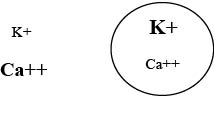:dropcap_open:T:dropcap_close:his is my third article in a series designed to highlight visceral dysfunctions that are perpetuating muscle contractions, loss of joint range of motion, and reoccurring structural misalignments that have become chronic and defy permanent correction. It is exactly these problems that cause patients to seek alternatives to continuing chiropractic care. I believe our profession must, in addition to specializing in structural disorders, begin identifying these underlying visceral problems and specialize in restoring normal function before disease entities can be identified.
Throughout 2010, my articles identified a series of tests for screening structural problems that may have an underlying visceral cause. I ended 2010 by discussing spinal flexibility tests and then began in February discussing the effects the autonomic nervous system has on the organs that share the same spinal innervation as the joints involved and the muscles that move them. More precisely, I am attempting to outline a means of quickly discerning possible lifestyle and dietary patterns responsible for visceral dysfunctions that produce muscle contractions responsible for loss of joint range of motion, pain and discomfort. That leads me to this month’s article and the correlation between excessive dietary alkalinity (protein and calcium deficiency) and the effects of parasympathetic stimulation.
:dropcap_open:We must always bear in mind that, because of the stress cascade, sympathetic stimulation always trumps parasympathetic stimulation.:quoteleft_close:
Last month, I discussed the effects of sympathetic stimulation and the stress cascade—a specific cascade of physiological events initiated by the hypothalamus. Both the endocrine system and the sympathetic system must respond in a specific manner. We must always bear in mind that, because of the stress cascade, sympathetic stimulation always trumps parasympathetic stimulation. It is precisely this that causes so many seemingly indefinable symptomatic patterns.
The effects of autonomic stimulation are well known and possible causes easily recognized. But what is often overlooked is the possibility that, while the central nervous system may be calling for increased parasympathetic activity on the part of one or more organs, the organ or tissue may not be able to respond adequately due to a relative calcium deficiency. Let me say the same thing only differently; the hypothalamus may be signaling parasympathetic stimulation to an organ or tissue, but the cells may not be able to respond appropriately. Let’s examine what is required nutritionally for organs to respond appropriately to parasympathetic stimulation.

Just as an antagonistic relationship exists between H+ (acid) and OH- (alkaline), so does an antagonism exist between potassium and calcium with in the cells. The ability or inability of the organ/tissue to respond appropriately to autonomic stimulation rests on the balance between those minerals. Normally, the concentration of calcium ions is higher in the extracellular fluids while the concentration of potassium ions is higher within the cells.

Adequate calcium in the extracellular fluids is necessary for maintenance of a lesser amount inside the cells; otherwise intracellular calcium must begiven up to the extracellular fluid to maintain homeostasis. That would prevent the cells from responding appropriately to sympathetic stimulation and the patient would exhibit symptoms of parasympathetic dominance. Generally speaking, the patient would complain of excessive symptoms of an inappropriate need for rest, the inability to heal or recuperate, and reproductive problems.
Of course, the above has incredibly far-reaching influences and sometimes confusing consequences, not only for patients with chronic structural problems but for those who cannot respond appropriately to stress.
Lets’ carry that scenario a little further into a patient’s life and recognize the need for chiropractic as a profession to become recognized as the profession that restores normal function and maintains health.
The following is a list of symptoms associated with a deficiency of protein and calcium that causes the body to struggle maintaining homeostasis in the extracellular fluids. Obviously this stress, if long continued, results in necessary compensations and the appearance of chronic degenerative conditions. How many of your patients do you recognize from the following list of symptoms related to increased dietary alkalinity?
That is quite an extensive list of symptoms that you see frequently in your office. Picture in your mind a few patients, one at a time, which fit into a symptom pattern above. Now, superimpose over those symptoms the structural problems that you repeatedly see in these patients and understand that you cannot separate structure and function. Their dietary choices, with excesses and deficiencies, may very well be causing and perpetuating the chronic structural problems you seek to correct.
